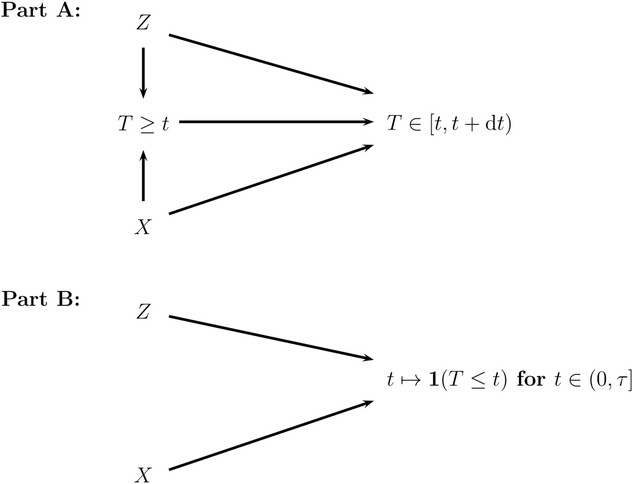July 16, 2025
The authors discuss how to correctly interpret causal hazard contrasts and how the analyses of hazards should routinely be translated onto probabilities. As they mentioned in their discussion, hazards are the backbone of analyses of time-to-event data and used in several survival constructs. They also state that hazards are conditional quantities given previous survival, but according to Hernán (2010), for randomized intervention, conditioning on previous survival is conditioning on a post randomization event and breaks randomization. The debate according to them does not focus on the survival estimate, yet the hazard and survival estimates go hand in hand. Hernán (2010) had suggested first a statistical analysis of hazards and the to transform the first analyses onto the unconditional probability scale. Their aim is that the hazard ratios can be given a causal interpretation if interpreted in a causal sense. Another issue has been how to interpret time-varying effects of hazards.
In order to define relationships they used counting process formulation and allowed time-varying definition of the Kaplan-Meier. The conditional probability of an observed event given the past is then equal to an at-risk function times some hazard. In this literature, the weaker assumption of independent censoring ensures such identifiability, in this case of the hazards. However, this is not the same as random censoring, for which it is not clear if this ensures identifiability. Since hazards are conditioning on previous survival then this can lead to collider bias. Then the issue becomes how to interpret a contrast between hazards with impact from potential collider bias. Theoretically there should not be collider bias with the IIT assumption. Interpretation of time-varying hazards can have an issue with collider bias if it becomes period-specific interpretation.
In their discussion, they mentioned that frailties may be used to explicitly model the selection that occurs as a consequence of conditioning on a collider. They decided not to introduce frailties due to the issue of population vs individual hazards. Overall the paper brings up important points but the discussion of theoretical points at times was a bit confusing and not on point.
Written by,
Usha Govindarajulu
Keywords: hazards, time-to-event, censoring, causal effect
References:
Beyersmann J, Schmoor C, and Schumacher M (2025) “Hazards Constitute Key Quantities for Analzying, Interpreting and Understanding Time-to-Event Data” Biometrical Journal.
https://doi.org/10.1002/bimj.70057
Hernán, M. A., S. Hernández-Díaz, and J. M. Robins. 2004. “A Structural Approach to Selection Bias.” Epidemiology 15: 615–625.
https://onlinelibrary.wiley.com/cms/asset/20fbc254-d4d7-4299-9b40-79708f3c3da8/bimj70057-fig-0001-m.jpg
